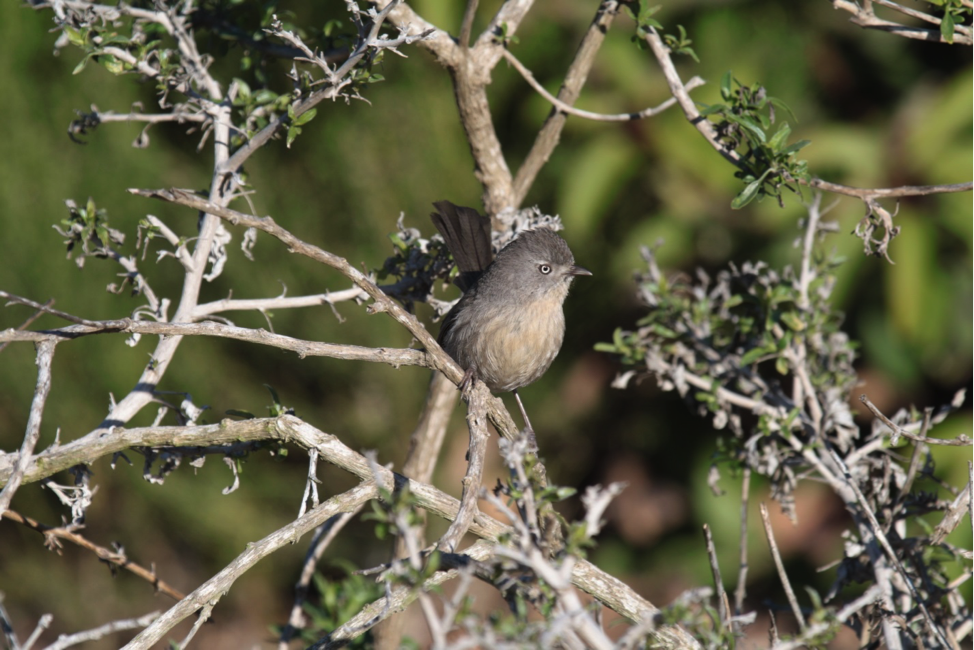
This bird is hard to find because of its secretive foraging habits, but its song is extremely recognizable, likened to a bouncing ball. The male’s call starts out with 3 to five “pits” or ball bounces, followed by a faster trill, the female will answer and bounce the ball 3 to 14 times -- without the trill. You will most likely find these birds on the Bayside trail.
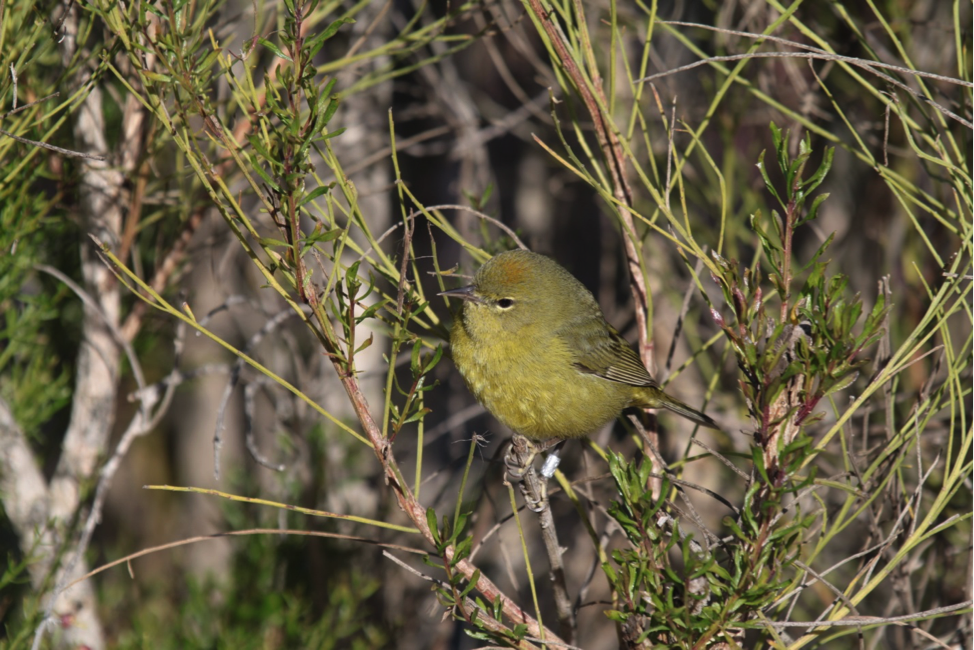
Named for its subtle orange feathers on the top of its head, but is more recognizable due to its overall greenish coloration. From allaboutbirds.org: “Male Orange-crowned Warblers sing a trilling song of sweet, clear notes. The song can remain on a single pitch or it can rise slightly in the middle and end on a distinctive rising or falling note—chee chee chee chew chew. The song pattern varies enough that individual males can be told apart by the version they sing.” These birds can be found all over the park.
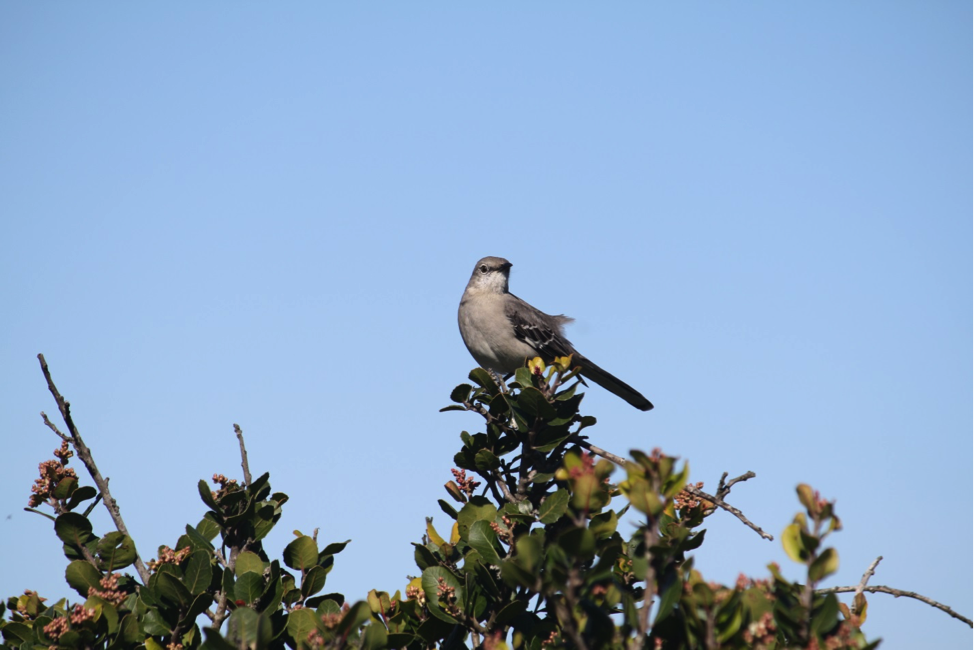
I think we all know about the song of this bird, the Milli Vanilli of the bird world, stealing the songs from other birds it shares habitat with. Though not brightly colored, this bird makes up for its drab plumage with a vast repertoire of noises, singing all day, and sometimes all night. They will repeat “phrases” of other birds’ songs 2-6 times, before moving on to a new song. The mockingbirds that sing all night are usually males that have not yet found a mate. Find these birds near the visitor’s center, or singing loudly near your bedroom window at night.
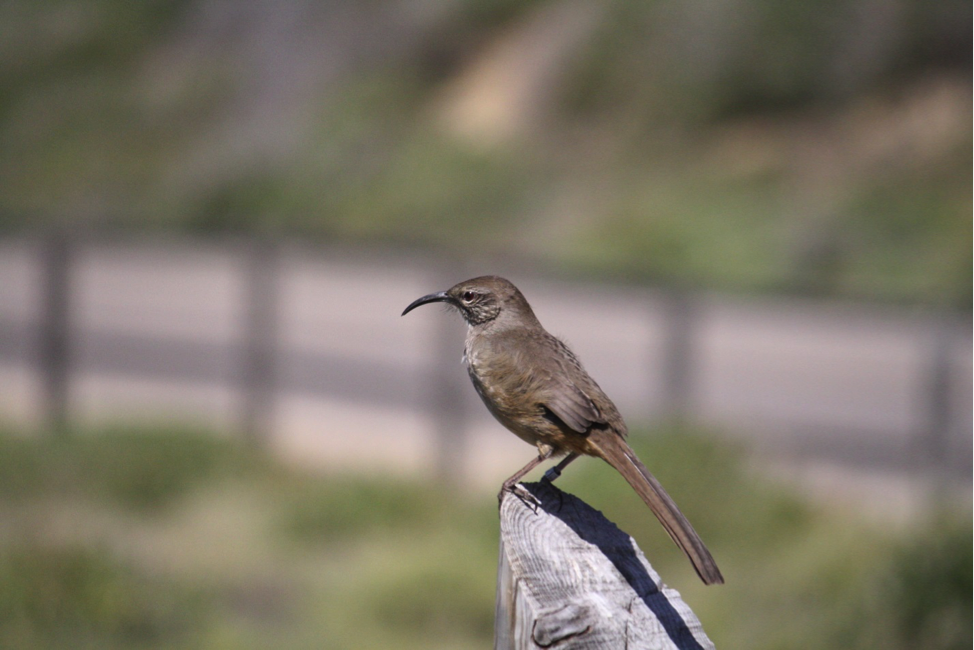
A cousin of the Northern mockingbird, both in the family Mimidae, the California Thrasher is physically and vocally recognizable. It is a large bird and has a long, down-curved beak that it uses to sort through leaf litter in search of delicious insects. It also sings beautifully, with a number of warbled and varied phrases that it may repeat. It likes to be seen and heard, and is very abundant at Cabrillo, so you will not miss this bird! You can spot them near the visitor’s center and lighthouse areas.
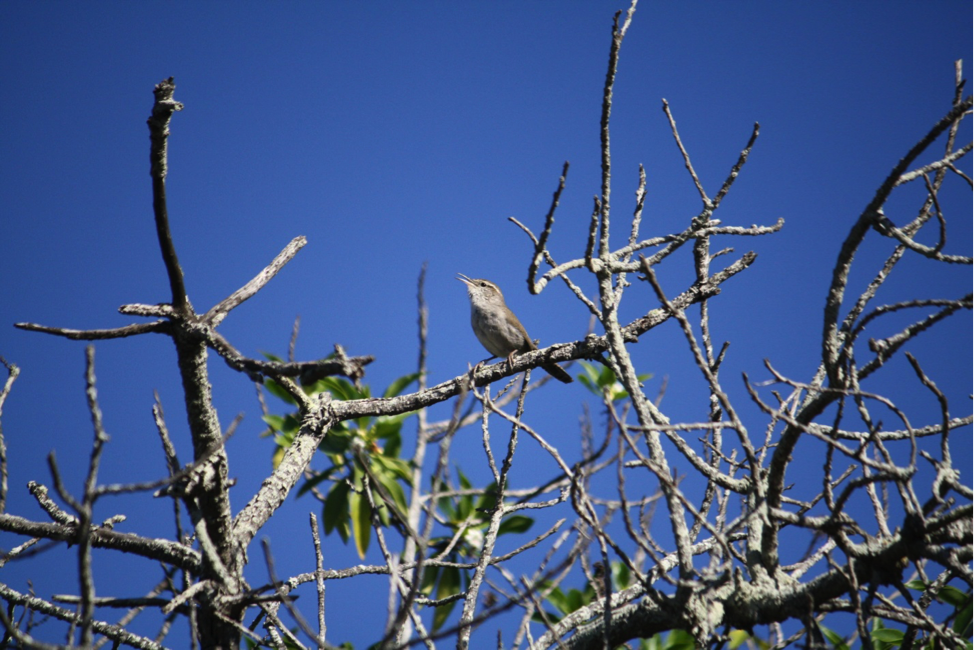
A small bird with white eyebrows perches atop a lemonade berry and sings a beautiful song toward the sky. This is the Bewick’s wren, and many are making an extended appearance at Cabrillo National Monument this season. In an effort to establish and defend its territory, and to attract females, only the male Bewick’s wren sings. This bird can have a repertoire anywhere from 9 to 22 songs! You can recognize any of the songs as they all end on a high trill. These birds are currently all over the park.
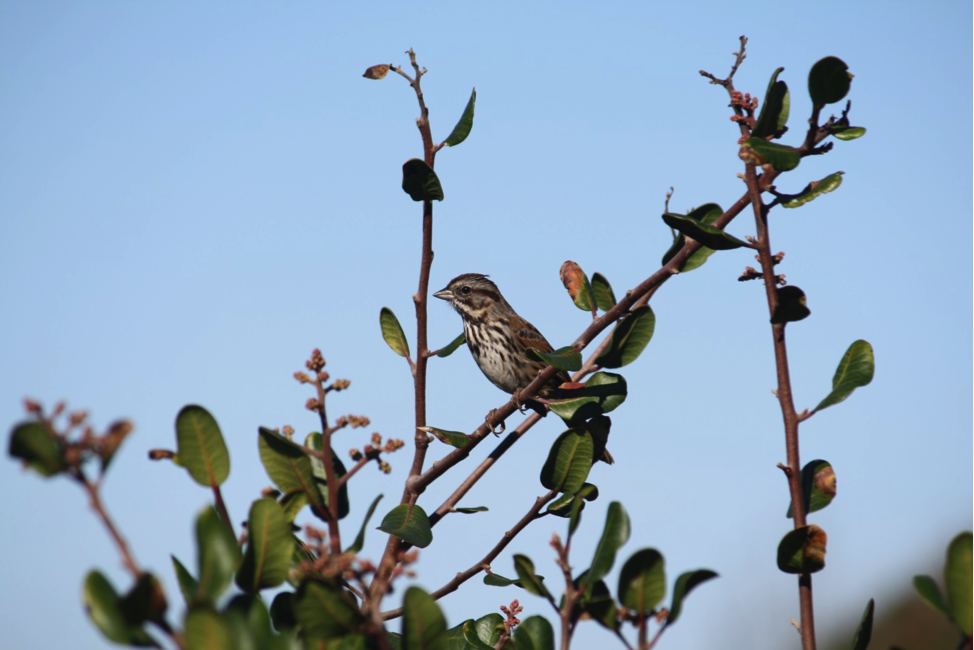
Just as its name implies, the song sparrow is one of the most melodic singers in the bird world. Typically a drab looking bird, the song sparrow’s song starts out with abrupt, spaced out notes and then a loud song anywhere from 2-6 phrases, followed by a buzz or trill. You will most likely find this bird on the western side of Cabrillo.
